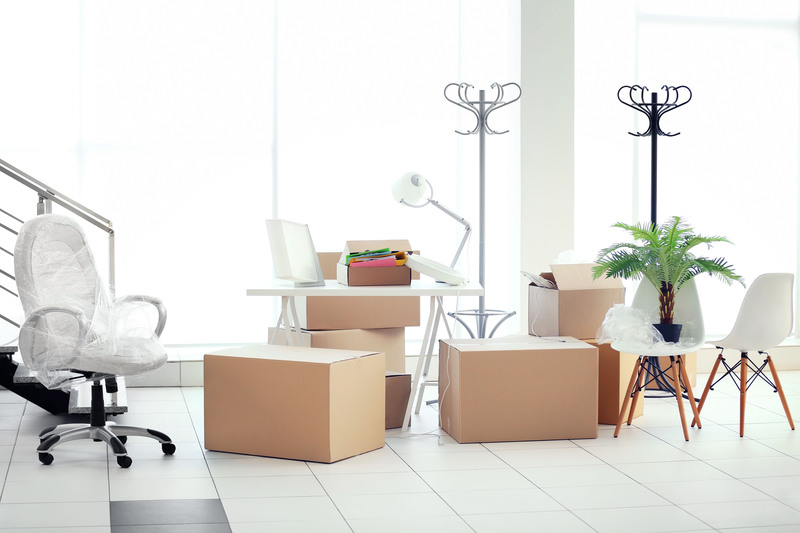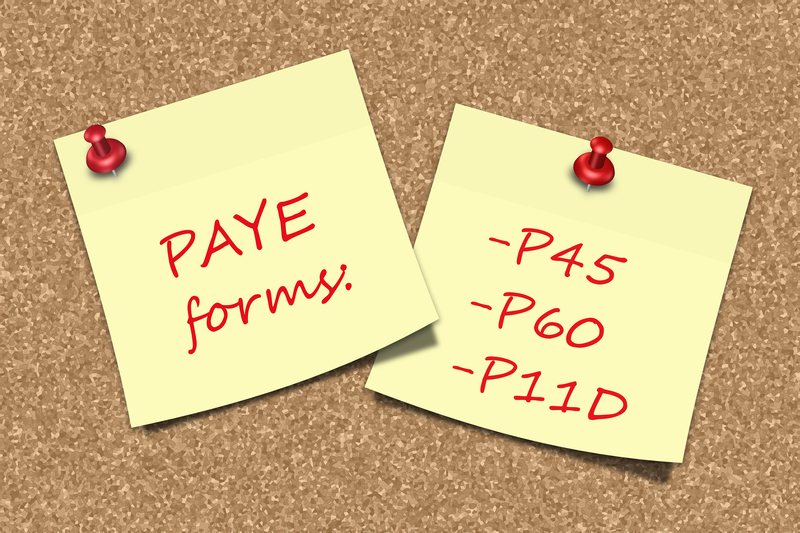Tricks to Ensure Easy Bed and Mattress Transportation
Posted on 30/05/2025
Tricks to Ensure Easy Bed and Mattress Transportation
Relocating or transporting a bed and mattress can be a stressful endeavor without the right planning. Improper handling can cause damage not only to your sleeping essentials but also pose risks to your health. However, with the right tricks and tips, moving your bed and mattress can be a hassle-free process. In this comprehensive guide, we'll explore proven methods to make moving your mattress and bed easy, including preparation, packing, lifting, and transportation techniques. Whether you're relocating locally or moving across the country, these actionable steps will help you protect your investment and ensure a smooth transportation experience.
Why Proper Bed and Mattress Transportation Matters
Moving furniture is already challenging, but your bed and mattress are uniquely vulnerable to damage, dirt, and structural issues. Beds are often bulky, and mattresses, although soft, are unwieldy and can easily pick up stains, dust, or get ripped in transit. " An improperly transported mattress may become uncomfortable, less hygienic, and even lose its support, leading to poor sleep and potential health risks.
- Maintains Sleep Quality: Your mattress's structure is essential for proper back alignment and rest.
- Upholds Hygiene: Prevents the accumulation of dust, dirt, and moisture.
- Protects Investment: Mattresses and beds can be quite expensive, so safe transport is key.
- Ensures Efficiency: Makes setting up in your new location faster and easier.

Pre-Move Preparations: Ensuring a Smooth Bed and Mattress Move
1. Gather the Right Packing Materials
Before you start, assemble all necessary moving supplies to securely transport your bed and mattress:
- Mattress Bag or Cover: Essential for protecting against dust, moisture, and tears.
- Furniture Blankets: Offer added cushioning for the bed frame and mattress.
- Moving Straps and Ropes: Help secure items in the moving vehicle.
- Screwdriver or Allen Wrench: Needed for disassembling the bed frame.
- Packing Tape: For reinforcing mattress bags and keeping blankets in place.
- Marker and Labels: Label all small parts and tools needed for reassembly.
2. Clear the Pathway and Make Space
Prior to moving your bed and mattress, thoroughly clear all obstacles from hallways, doorways, and staircases leading to the exit. This minimizes the risk of damage to your furniture and home, as well as injury to yourself and any helpers.
3. Take Measurements
Measure both your mattress and bed frame, as well as doorways, hallways, elevators, and staircases. Knowing these dimensions ensures you avoid getting stuck during the move, saving time and frustration while guaranteeing safe mattress and bed transportation.
Disassembling Your Bed Frame for Easier Transportation
Few tricks can make moving a bed less tricky than thorough disassembly. Here's how to proceed:
- Remove Bedding: Strip all sheets, blankets, pillows, and mattress protectors.
- Detach the Headboard and Footboard: Use tools (screwdriver or Allen wrench) to carefully unbolt connection points.
- Disassemble Side Rails: Follow the manufacturer's guidelines to separate rails and support slats.
- Organize Hardware: Place screws, bolts, and connectors in labeled bags. Tape these bags to the headboard or keep them in a clearly labeled box.
Remember: Taking photos during disassembly can be a lifesaver when it's time to put everything back together.
Packing Your Mattress Properly
1. Clean and Air Out the Mattress
If time permits, vacuum and air out your mattress before packing. This helps remove dust and prevents moisture from becoming trapped, which can lead to odor and mold growth after transport.
2. Use a High-Quality Mattress Bag
A durable, waterproof mattress bag is the best way to protect your mattress during transport. Slide the mattress into the bag, seal it well with packing tape, and ensure there are no holes or weak spots.
- For foam mattresses: Consider vacuum sealing for easier handling and reduced size.
- For spring mattresses: A standard mattress bag is usually sufficient; avoid bending the mattress to protect the internal springs.
3. Secure with Moving Blankets
For added cushioning and protection, wrap the mattress in furniture blankets, especially around corners and edges. Secure the blankets with straps or tape.
4. Label the Mattress
Label the outside of the mattress bag with "Fragile," "This Side Up," or "Do Not Bend" to guide movers and prevent improper handling.
Transporting the Bed Frame Like a Pro
1. Bundle Bed Parts Together
Keep all related bed frame parts together. Wrap each major component, such as the headboard, side rails, and slats, in moving blankets. Use tape to hold blankets in place, but avoid letting adhesive touch the furniture's finish.
2. Stack Strategically in the Vehicle
- Heavy parts go first: Place the headboard or footboard on the bottom of the stack.
- Keep small parts secure: Store bags of hardware in an easy-to-access spot.
- Prevent shifting: Use moving straps to secure everything and reduce movement during transit.
Expert Mattress Transportation Tips
1. Always Keep Mattresses Upright
While moving a mattress, it is best to keep it on its side and upright rather than lying flat. This conserves space, prevents the mattress from getting crushed by other items, and reduces the risk of warping.
2. Avoid Bending or Folding
Never bend or fold innerspring or hybrid mattresses. Foam mattresses are more flexible, but check with the manufacturer to avoid permanently damaging the internal structure.
3. Use the Right Vehicle and Packing Sequence
- Pickup Trucks and Vans: Ideal for moving large mattresses as they provide enough space for an upright position.
- Moving Trucks: Load the mattress last so it's the first item to be unloaded and won't get squashed by heavier objects.
- Small Cars: Only suitable for compact mattresses and short-distance moves; even then, make sure the mattress does not protrude dangerously.
4. Tie Down Mattress Securely
If transporting on top of a car or in an open vehicle, use durable ropes or ratchet straps to tightly secure the mattress. Always loop the straps through the doors, not the windows, and double-check for tightness to prevent the mattress from flying off during transit.
5. Protect Against Weather
Bad weather can strike unexpectedly. Waterproof mattress bags and tarps are crucial when moving during rain or snow to prevent water damage. If possible, schedule your move on a clear, dry day for maximum safety and mattress protection.
Carrying Large or Heavy Mattresses Safely
1. Use Proper Lifting Techniques
- Lift with your legs, not your back: Bend at the knees and keep your back straight.
- Get help: Mattresses are large and awkward for one person to handle safely. Use a moving partner whenever possible.
2. Try Mattress Slings or Moving Straps
Specialty mattress moving straps or slings can make transporting even king-sized mattresses easier and safer. These tools distribute the weight more evenly and allow for a better grip, reducing the risk of injury and damage.
3. Clear Obstacles and Prep Hallways
Plan your route and remove all tripping hazards in advance. This trick will make transporting your mattress and bed frame less stressful and much safer.
Setting Up Your Bed and Mattress at the Destination
Once you arrive, proper setup ensures your bed lasts and provides optimal comfort:
- Inspect for Damage: Before assembly, examine every bed and mattress piece for tears, stains, dented frames, or structural problems.
- Allow Your Mattress to Breathe: Remove the mattress from all bags and covers and let it sit for several hours to air out and regain its shape, especially if it was vacuum-sealed.
- Follow Manufacturer's Instructions: Use your disassembly photos and hardware labels to reassemble the bed frame quickly and securely.
- Clean Once More: Wipe down any dust or debris that may have accumulated during the move before making your bed.
Additional Expert Tricks for Easy Bed and Mattress Transportation
1. Hire Professional Movers for Large or High-Value Mattresses
If you have a particularly valuable, heavy, or delicate mattress or bed, consider hiring professional moving services. Pros possess the right equipment and experience to move your items efficiently and safely.
2. Rent the Right Equipment
Rental moving tools, such as furniture dollies, mattress carriers, and hand trucks, help minimize strain and damage. You can often rent these from moving supply stores for a reasonable fee.
3. Don't Forget Your Box Spring
If you're also transporting a box spring, pack and maneuver it like a mattress. Use a dedicated bag or cover and secure it upright in the moving vehicle.
4. Consider Replacements for Old Mattresses
If your mattress is approaching the end of its lifespan (typically 7-10 years), moving may be a good opportunity to invest in a new one. Transporting a worn-out mattress may not be worth the effort or cost.
5. Reduce Furniture Bulk
Some bed frames (platform beds, adjustable bases) can be partially disassembled for easier transportation. The less bulky the pieces, the easier and safer the move.
6. Check Transportation Regulations
If moving across states or using professional movers, confirm any regulations regarding moving large furniture or mattresses. Some areas have restrictions on oversized items or may require certain packaging standards.

Common Mistakes to Avoid When Moving Beds and Mattresses
- Poor Planning: Last-minute moves often lead to damage and stress.
- Insufficient Protection: Skipping mattress bags, blankets, or padding jeopardizes cleanliness and support.
- Bending or Folding Inappropriately: Can ruin innerspring/hybrid mattresses permanently.
- Ignoring Safety: Carrying heavy mattresses without help can cause injuries.
- Dirty Vehicles: Ensure the moving van or truck is clean to prevent dust and stains.
Conclusion: Move Your Bed and Mattress Like a Pro
By following these tricks to ensure easy bed and mattress transportation, you'll enjoy a smoother, safer, and more efficient moving experience. The key lies in preparation, using the proper supplies, and exercising caution throughout the process. Whether moving across town or making a cross-country leap, the right approach protects your valuable sleeping setup and sets you up for restful nights in your new home.
Remember: Quality sleep starts with a well-protected bed and mattress. With these expert tricks and simple solutions, you can move your bed and mattress easily and enjoy peace of mind every step of the way.
Frequently Asked Questions on Bed and Mattress Transportation
- Is it safe to transport a mattress on top of my car?
Yes, but only with proper weatherproof packaging and tight, secure strapping. Never allow the mattress to hang over the windshield or block your view. - Can I fold my memory foam mattress for moving?
In most cases, yes, but only temporarily. Always consult the manufacturer's recommendations to avoid voiding the warranty or damaging the foam. - How do I move a king-sized bed?
Completely disassemble the frame, use extra hands for moving large mattress sizes, and use a moving truck or van large enough to accommodate the mattress upright.
By following these comprehensive steps, you'll always ensure easy bed and mattress transportation, preserving both your investment and the comfort you deserve!







